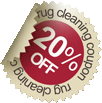
![]() FREE Pick up & Delivery
FREE Pick up & Delivery
![]() Non-Toxic Materials Used !
Non-Toxic Materials Used !
![]() We Use Green & Organic Solutions
We Use Green & Organic Solutions
![]() Complete Satisfaction Guaranteed !
Complete Satisfaction Guaranteed !
Call for our
24/7 EMERGENCY SERVICE
212-228-6300 Manhattan
718-222-9919 Brooklyn
718-875-5400 Queens
516-616-3945 Long Island
914-777-7334 Westchester
201-256-3334 New Jersey
203-683-3883 Connecticut
212-382-2525 NYC
212-382-2525 NYC
212-382-2525 NYC
Armenian Rugs |
212-585-1900 |
The Armenian people represent one of the most ancient civilizations of our world. Their history and culture can be traced back thousands of years to pre-Christian times. During the Middle Ages, Armenian art flourished due to the development of music, fine arts, applied arts, and literature. Thus pottery, jewelry and rug weaving artisans abounded from this time. Armenian rugs became a profitable niche that would bring notoriety to the Armenian Rugs industry, and remain popular even in the modern times.
A carpet being classified as an Armenian rug includes those that are knotted, tufted, or flat-woven, in Armenia. Armenian rugs are fragile, and thus many samples from ancient times do not exist. The most famous example of an Armenian rug which does still exist was the Pazyryk Armenian rug, which dates from 5th to 3rd century B.C. and was recovered from the harsh conditions of the frozen tombs of Siberia in what is hailed as a miracle. The Pazyryk Armenian rug was believed to be a ceremonial piece used at funerals.
There are a number of varieties of carpets that are designated as Armenian rugs, and Armenian rugs themselves are considered to belong to the Caucasian family of rugs, as well. In ancient times Armenian rugs were crafted for use as floor coverings as well as serving as decorative pieces for walls, chairs, tables, and even beds. In more modern times, Armenian rugs have served as decorations for church vestries and alters and as an entrance veil. Weaving Armenian rugs was a part of everyday life, and as in many other cultures of the time, Armenian rugs were crafted exclusively by women.
There are seven categories of Armenian rugs: the palas, jejim, mazar, matnakash (a double-faced carpet well known for this particular feature), kazakhi (including the straight and diagonal oghjids), shoolal, the kurds-yamani, and the Turksverni. Within the kurd-yamani group of carpets are the Armenian rugs know as the Snake carpets, the Sileh, fringed carpets and the Shamakhi. Materials used to create Armenian rugs include wool, silk, hemp, flax, and cotton, in any combination. Vegetable dyes as well as mineral and chemical treatments provide the rich colors for which Armenian rugs are undoubtedly famous.
The cleaning methods used for cleaning Armenian rugs will depend on its condition, its age, and of course the materials (dyes and fabrics) used to produce the piece. Of course, as they are valuable, Armenian rugs should never be cleaned using harsh cleansers, and to protect again rot and water damage, water should be removed completely from Armenian rugs during the cleaning process and in the event of a spill or flood. The pros at Oriental Rug Care NY recognize that your Armenian rugs require special care and consideration when cleaning them and performing maintenance upon them. We provide reliable, high-quality carpet cleaning, repair and restoration services in New York and all surrounding areas. We even accept shipping from all 50 states, so everyone everywhere can benefit! You will always get the best service and the best prices for work done on Armenian rugs and all other types of carpet. Call Oriental Rug Care NY today for a price estimate, or to schedule a service.
Carpet Cleaning Articles, Tips, Tricks & Info
- Apartment Cleaning in NYC
- Area Rug Cleaning
- Bedbugs Treatment
- Best Carpet Cleaning
- Buy a Carpet 101
- Carpet Got Wet - Tips
- Carpet Installation NY
- Carpet Mold Removal
- Carpet Stain Removal Guide
- Carpet Mildew - Tips
- Carpet Sale - Tips
- Carpet Steam Cleaning
- Carpet Repair
- Choose Your Fine Rug Cleaners - How To
- Dry Carpet Cleaning
- Dust Mite Allergy Prevention
- Green Carpet Cleaning
- Fire & Smoke Damage
- Handmade Oriental Rug Cleaning NY
- Large Area Rug Cleaning
- Local Rug Cleaning
- Mattress Cleaning NYC
- Moth Rug Proofing
- Natural Rug Cleaning
- Non-Toxic Carpet Cleaning
- Old Rug Cleaning
- Oriental Rug Hand Wash
- Persian Rug Cleaning
- Rug - Dry Cleaning
- Rug Got Wet - Tips
- Rug Padding - Info
- Silk Rug Care - Info
- Tapestry Cleaning Company
- Upholstery Shampoo Cleaning
- Wall-to-Wall Carpet Info
- Water Damage Restoration
- Water Damage Mold Restoration NY
- Wool Carpet Cleaners
- Wool Rug Repair














 Copyright 2001 OrientalRugCareNY.com
Copyright 2001 OrientalRugCareNY.com